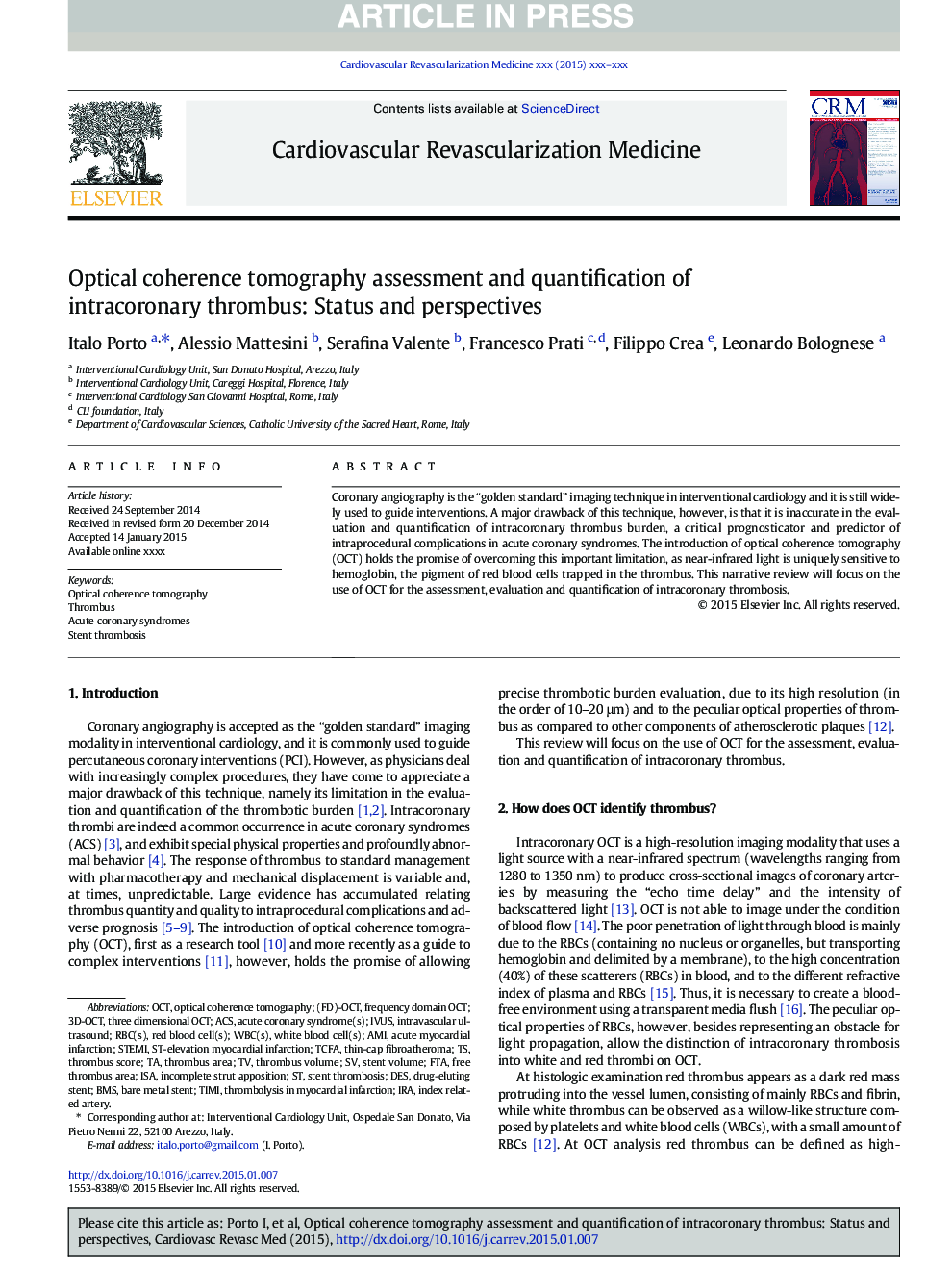| Article ID | Journal | Published Year | Pages | File Type |
|---|---|---|---|---|
| 5921212 | Cardiovascular Revascularization Medicine | 2015 | 7 Pages |
Abstract
Coronary angiography is the “golden standard” imaging technique in interventional cardiology and it is still widely used to guide interventions. A major drawback of this technique, however, is that it is inaccurate in the evaluation and quantification of intracoronary thrombus burden, a critical prognosticator and predictor of intraprocedural complications in acute coronary syndromes. The introduction of optical coherence tomography (OCT) holds the promise of overcoming this important limitation, as near-infrared light is uniquely sensitive to hemoglobin, the pigment of red blood cells trapped in the thrombus. This narrative review will focus on the use of OCT for the assessment, evaluation and quantification of intracoronary thrombosis.
Keywords
TIMIFTAACSBMSIRATCFASTEMIAmIthin-cap fibroatheromaIVUSDESdrug-eluting stentbare metal stentST-elevation myocardial infarctionOctThrombusStent thrombosisThrombolysis In Myocardial InfarctionOptical coherence tomographyred blood cell(s)acute coronary syndrome(s)acute coronary syndromesintravascular ultrasoundAcute myocardial infarctionISA
Related Topics
Life Sciences
Biochemistry, Genetics and Molecular Biology
Molecular Medicine
Authors
Italo Porto, Alessio Mattesini, Serafina Valente, Francesco Prati, Filippo Crea, Leonardo Bolognese,
